“There have been signs in the heavens to warn us from this place”
Larry Niven, Neutron Star
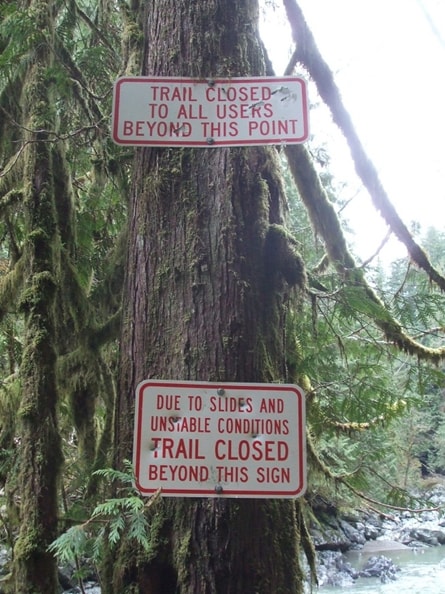
It’s just after 5PM on a warm Labor Day along the south fork of the Stillaguamish River. On this late afternoon, a father and son are picking their way along the abandoned wreckage of the Robe Canyon Trail. They are 1.5 miles from the trailhead on Highway 92. They are a half mile beyond the signs that mark the trail as closed and hazardous. We don’t know the cause -— perhaps a misjudged step or a moment of inattention. We do know the effect -— a 40-foot tumble down a rocky slope, and a teenager with a disabling leg injury.
The page comes out at 6:20PM –— COUNTY ALL: Packout of injured hiker, Robe Canyon. June and I have our packs ready to go; we only have to change clothes, hop in the XC60 SAR-mobile, and hit the road. As we pull out of the neighborhood, I call into our unit to report that we are in route with two, with an ETA of 7:30PM. June turns on her SAR radio and as we drive north on the two-lane Highway 9, we start monitoring radio traffic to get updates on the evolving mission:
Mike has assumed SAR command at the trailhead and is updating Danny (Sgt. Danny Wikstrom – Snohomish County Sheriff SAR Coordinator) as he learns more about the situation.
As Danny responds, we can hear his siren in the background, so we can tell he is also in route.
Oyvind and Kevin (Everett Mountain Rescue) just happened to be driving home from an ascent of Vesper Peak when they saw Robe Valley FD responding. They were on scene within minutes and have been sent out as the hasty team to accompany the fire department volunteers.
We can hear Mike out of breath on the radio as he also starts down the trail, attempting to catch up with the hasty team. Mike radios Danny to request that litter equipment and a full first aid kit be sent down the trail by the next teams that arrive.
By 6:45PM, the hasty team has reached the subject and performed a quick assessment and stabilization. They radio for a vacuum splint to be sent down trail if available, as well as a 200-ft static line.
Mike arrives at the subject location and radios Danny to request that the helo team be activated in case they are needed.
Danny radios SnoHawk 10, the helo team starts warming up and loading gear.
Within minutes, Mike is back on the radio recommending a helo extraction, advising that a litter packout on the abandoned trail would be hazardous to both rescuers and subject.
SnoHawk 10 departs Taylors Landing (our secret SAR operations base), and will be on scene within 20 minutes.
June and I arrive on scene to find the Mountain Loop Highway lit up with road flares and flashing lights from Danny’s white jeep and from Robe Valley FD vehicles. We check in with Danny, who is now Incident Command. Even though it looks like the helo extraction in on, he is still sending all teams down the trail for support as fast as they arrive. He is scribbling notes on a pad, and will be assigning team numbers after we get into the field. June and I grab our helmets, pull on boots and light packs, and head on out on a trail which initially is a gentle wide path through the forest heading south toward the Stillaguamish River.
The Robe Canyon Trail has its origins in the 1890s as a railroad line between the now abandoned mining town of Monte Cristo, and Granite Falls 40 miles to the west. With great effort the route through Robe Canyon was carved out, paved with cement, and lined with huge timbers to support the track as it ran just above the Stillaguamish River. Nature had other plans, and over the years shredded the track with floods and landslides, causing it to be abandoned . . . but not quite.
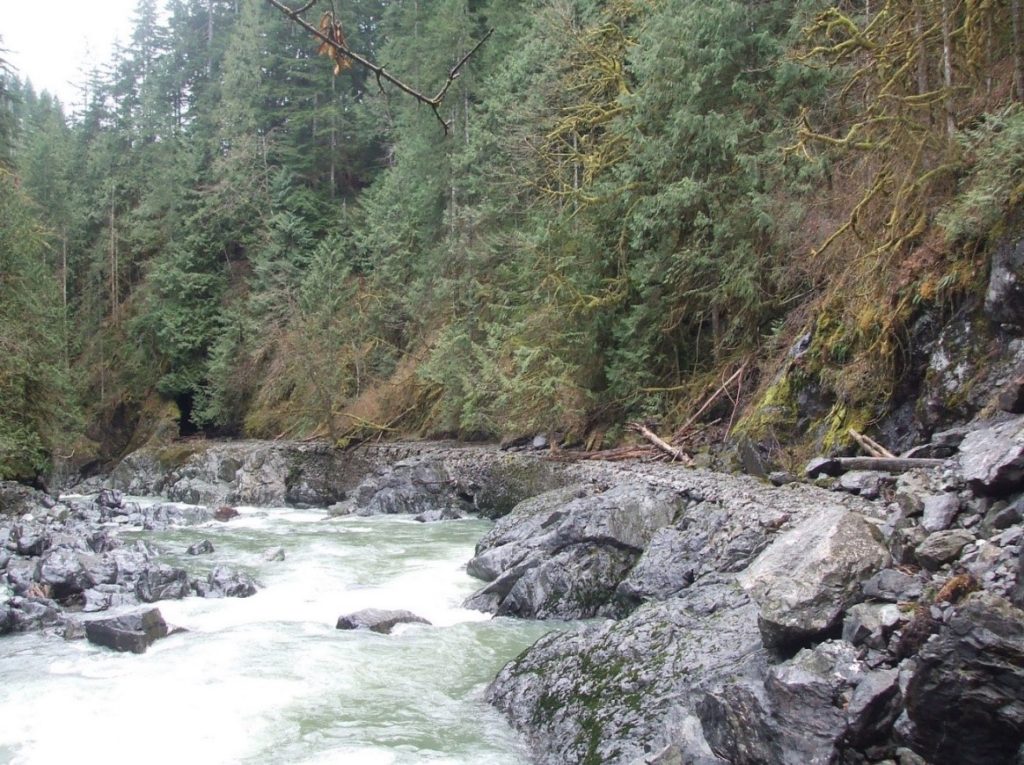
One hundred years later, a foot trail was all that remained, developed and maintained by Snohomish County with plans to eventually link up with the Lime Kiln Trail to the southwest. Once again, nature had other plans, and the storm and washouts of 2006 caused the trail to be closed to the public.
June and I monitor SAR radio as we hike rapidly down the trail toward the river. Within minutes, we hear that SnoHawk 10 has lowered one of our HRTs (helicopter rescue technicians) to join the hasty team at the subject’s location. SnoHawk 10 flies off to set down on a sandbar while the subject is packaged for the extraction, and radios that they will be back in 20 minutes for the pick-up.
We pick up our pace in an attempt to arrive at the subject location in time for the extraction. We pass the Trail Closed sign, and immediately the trail deteriorates into a rough old rail bed, strewn with rock slides, slippery logs, and in some places old iron spikes sticking up from the ground. We continue south, and the canyon walls pinch in while the drop down to the river increases. As we pick our way carefully over the remnants of the trail, we pass the subject’s father who is now hiking back out to the trailhead. We scramble around and over one tight rocky corner, and then are back onto a flat rail bed section leading to Tunnel 5. Just inside the tunnel we crawl over downed logs that partially block the entrance. With flashlights in hand, we carefully work our way through the almost complete darkness, then begin to see a faint glow at the far end.
As we exit the tunnel, light is just beginning to fade and we see and hear SnoHawk 10 hovering not 200 feet above the river. In search and rescue, ground teams and helo operations weave an integrated dance of cooperation and support. For most rescue missions, we begin by assuming that a helo extraction will not be necessary (or possible), and so ground teams are tasked with reaching the subject with enough personnel and resources to do a packout. Hasty teams typically reach the subjects first, to assess their condition, the nature of a ground extraction, and the immediate surroundings. Subsequent ground teams arrive carrying litter equipment, ropes, and any additional gear needed.
When subject medical conditions or terrain lead to a helo extraction, ground teams are secretly pleased (Yea!!) that we will not have to do an arduous carry across miles of rough ground or trail. We shift into support mode – making sure that the extraction zone is marked and safe; making sure that the subject is packaged carefully for the hoist; standing by in case weather or other conditions cause helo operations to be aborted; and finally – safely getting all ground teams back to IC, while carrying out all of the gear that was staged to the subject’s location.
Over the radio IC now calls for “clear radio channels for helo operations.” Downwash from the helicopter rotors is now blowing tree branches back and forth, and June and I set down our packs at the south entrance of the tunnel, and pull on helmets and headlamps. Mike is on the radio warning that the lift line is too close to nearby trees. Operations are paused while SnoHawk 10 repositions. Within minutes, first the injured subject, then our HRT, are hoisted up and into SnoHawk 10. Over the radio we hear “clear for forward flight”, and the helo quickly lifts up and disappears down river. On scene, all is quiet now and darkness is upon us. We got the subject out just in time.
We hike back in the dark over slick rocks above the raging river just below. With our way illuminated only by headlamps, we ponder on the decisions that this father and son (and many others before and after them) make when bypassing those warning signs. Most of us have been in that situation before. Most of us have seen similar signs, grinned at the challenge, and proceeded — assuming all would be well.
And most of us have returned safely, perhaps to share our adventures with close friends or with the world of social media. And when that next young boy slips and falls in Robe Canyon (and it’s only a matter of time folks), do all of us think “Well, he should have been more careful, like we were.”
Or — do we all share some unspoken guilt, for encouraging risk that leads others to injury and leads SAR volunteers to dangerous rescue missions.
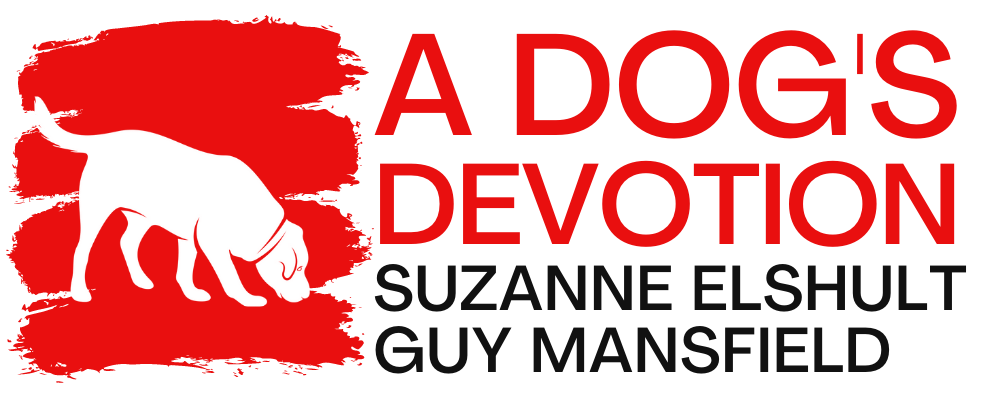
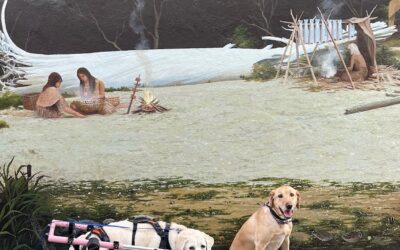
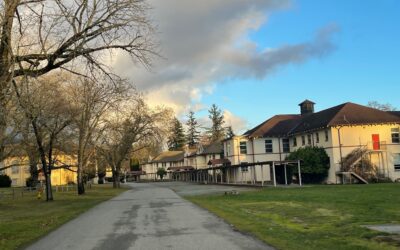
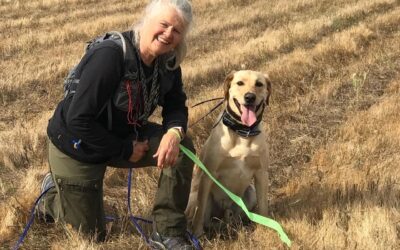
0 Comments